Publications on Young People

Resource | Publications,
Since the framework was launched, UNAIDS and partners have reported annually on progress towards achieving these targets. Since the deadline for achieving the targets passed in December 2020, this is the final Start Free, Stay Free, AIDS Free progress report. Although the targets were global, partners identified 23 countries for intensified focus under the framework. This report specifically highlights progress against the targets in focus countries.
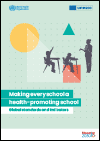
Resource | Publications,
The right to education and the right to health are core human rights and are essential for social and economic development. Now, more than ever, it is important to make all schools places that promote, protect and nurture health; that contribute to wellbeing, life skills, cognitive and socioemotional skills and healthy lifestyles in a safe learning environment. Such schools are more resilient and better able to ensure continuity in education and services, beyond the delivery of literacy and numeracy.
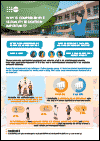
Resource | Fact Sheets,
‘My boyfriend is pressuring me to have sex, how do i say no?’
‘What is love?’
‘What does it mean if I am a girl and I find other girls attractive?’
‘What is HIV and how can I protect myself?’
These are common questions that young people are either too afraid to ask or lack the comprehensive knowledge, supportive attitudes and life skills they need to make these decisions about their lives and bodies safely and responsibly. Sexuality is a fundamental part of human life. Every young person will have to make decisions that impacts their sexual and reproductive health, and wellbeing. That is why comprehensive sexuality education is so important.
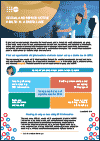
Resource | Fact Sheets,
Digital media are increasingly influencing the lives of young people. Around the world, adolescents and young people are using digital media as a platform to learn, experience, and communicate. Across Asia, and increasingly in the Pacific, young people use smartphones, tablets and computers to engage in diverse online activities, such as social networking, instant messaging/texting, and browsing websites/search engines. This connectivity creates both positive opportunities to access sexual and reproductive health information but also challenges on many fronts.
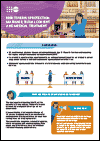
Resource | Fact Sheets,
We need to ensure a balance between protecting adolescents (age 10-19 years) from harm and respecting their agency and right to sexual and reproductive health (SRH).
This factsheet addresses the issue of ‘rights versus protection’ through (1) Laws related to age of marriage; (2) age of consent to sex; and (3) age of consent to services.These laws which are intended to protect young people also need to incorporate adolescents’ agency and context of their lives. Adolescents’ agency needs to be at the centre of efforts to develop and implement legislation that impacts their lives.
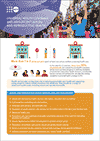
Resource | Fact Sheets,
Health services play an important role in reducing preventable poor health and supporting young people to make a healthy transition into adulthood. While many countries in Asia and the Pacific have made considerable progress towards effective coverage, and to some extent equitable coverage, of sexual and reproductive health (SRH) services, progress has not been realised for adolescents (age 10-19 years). Many national universal health coverage programmes exclude SRH services that are of particular priority and importance for adolescents. As a result, young people (age 15-24 years) continue to have a high unmet need for essential SRH services and coverage is particularly low among rural, less educated, poorer, and marginalised young people. This factsheet summarizes key recommendations to improve the inclusion of adolescents and young people in universal health coverage.
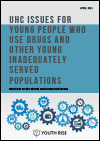
Resource | Publications,
Achieving Universal Health Coverage (UHC) is a goal we should all be striving for. Across the world, countless people are suffering unnecessary harm and death as a result of lack of access to affordable, necessary healthcare. While all of us suffer to varying degrees when healthcare is not universally available, it is the most marginalized in our societies who are impacted the most. As a young transgender woman who uses drugs my communities are among those most impacted by lack of access to healthcare. Young Inadequately Served Populations (ISPs), particularly in the Global South, are the communities who are going to continue to be left behind if we do not achieve UHC.
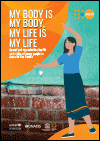
Resource | Publications,
This review provides an update to the 2015 report highlighting the current status of young people’s sexual and reproductive health and rights (SRHR) and examines key SRHR priorities in Asia and the Pacific to support informed policy, programming and advocacy.
This review has a particular focus on current evidence, policy and programme approaches related to key SRHR priorities in the region: child marriage and early union; adolescent pregnancy; young people with diverse sexual orientation and gender identity; SRH in a digital age; comprehensive sexuality education; and universal health coverage for adolescent SRH.
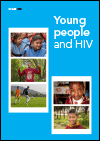
Resource | Publications,
Two out of every seven new HIV infections globally in 2019 were among young people (15–24 years). Additional efforts need to be made to address the structural factors that increase the vulnerability of adolescent girls, young women and young key populations and their risk of acquiring HIV, such as gender inequalities, gender-based violence, poverty, stigma and discrimination, and insufficient implementation of comprehensive sexuality education programmes.
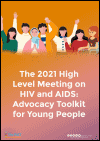
Resource | Publications,
The HLM Youth Guide has been developed by The PACT and UNAIDS to provide young people with information and guidance on what is and how to engage in the High-Level Meeting on HIV & AIDS that will take place from 8-10 June at the United Nations General Assembly. The intended audience of this Guide are young activists and youth-led organizations working on HIV and SRHR at all levels of the response, especially those key populations most affected by HIV.





